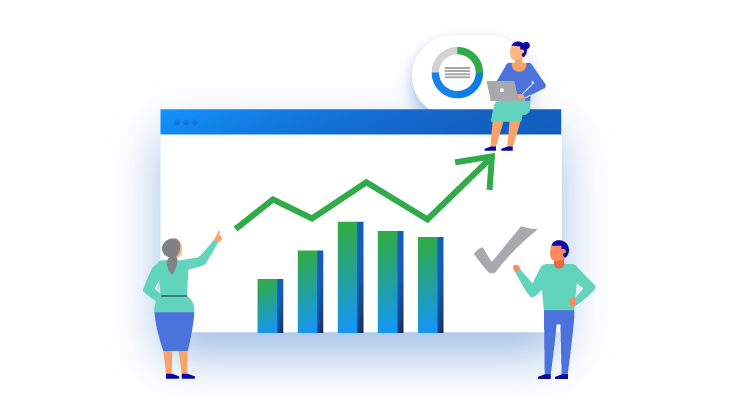These days, most employees work with data, regardless of their role—but they’re not necessarily interpreting that data. And they’re not necessarily finding any insights in that data.
Data analysis used to be the domain of data analysts, and in many organizations that’s still the case. The average employee doesn’t have the specialized technical skills required to dig deeper into that data, especially if it involves coding.
That means they have to send a formal request to the IT department and wait to hear back, which could take days or even weeks. And if they have a follow-up question? They have to go through the process all over again.
For the IT department, it’s not an ideal scenario either. They already have a lot on their plate, so it’s one more thing to add to their ‘to do’ list. And if the request isn’t directly related to the strategic direction of the company, it will likely be at the bottom of that ‘to do’ list.
But data is a company’s greatest asset. You don’t want that asset sitting around in servers or in the cloud, not doing anything to drive the business forward.
Why should you free your data?
In a world where data is growing exponentially, companies need the ability to interpret that data in as near real time as possible. If business leaders need to make an urgent decision related to a sudden market disruption, they simply can’t afford to wait days or even hours to respond. And typically it’s better to make that decision based on accurate information than on a ‘gut’ feeling.
That’s where data democratization comes in. In many organizations, the IT department ‘owns’ the data. But data democratization frees up the data so it’s accessible to any employee, regardless of their technical—or, rather, lack of technical—capabilities.
In other words, IT is no longer the gatekeeper of data. For users, there’s less reliance on IT to produce reports, since they can create their own.
It also means IT doesn’t become a bottleneck. And data analysts can focus on more strategic requests while users turn to self-service BI for ad-hoc queries to help inform their decision-making in specific scenarios, particularly those that are time-sensitive.
Self-service BI means that users can access business intelligence tools, like interactive dashboards and reports, without the need for specialists to interpret the data. Every user, regardless of their role, can access data and tools for decision-making—and have a personalized BI experience.
With self-service BI, they can slice and dice and drill down into the data they need for real-time decision-making. Even non-technical users can create dashboards and visualizations from their data and even share their work for better collaboration.
How do companies benefit from self-service BI?
If every user in your company is a data analyst, it gives your company a competitive edge over those who rely solely on the IT department for data analysis and interpretation.
This is particularly the case when data lives in siloed systems across business units, meaning any insights generated from the data typically aren’t shared among other business units—so it’s easy to miss the big picture.
Gartner predicts that, by 2023, organizations that promote data sharing will outperform their peers on most business value metrics. This involves “establishing trust-based mechanisms and preparing a data-sharing environment.”
Preparing this environment will involve a change in corporate culture, as well as the development of data governance policies around data democratization (so the data is compliant with security and privacy policies).
Encouraging user adoption means choosing intuitive, easy-to-use tools. If a non-technical user is required to do even basic coding to access self-service BI, then chances are they won’t bother with it, and the tools will only be adopted by power users. And there’s no point democratizing data if users aren’t going to do anything with it.
The right tools can empower users to make the most out of their data, while freeing up bottlenecks in the IT department. For example, Dundas BI has designed self-service dashboards that give users the freedom to explore enterprise datasets and make actionable decisions with minimal to no IT support. Find out more here.
About the Author

Vawn Himmelsbach is a writer and editor specializing in enterprise IT, writing for national newspapers and technology trade magazines on everything from AI to zero-day threats. She also spent three years working abroad as an Asian correspondent, covering all things tech.
Follow on Linkedin



Follow Us
Support